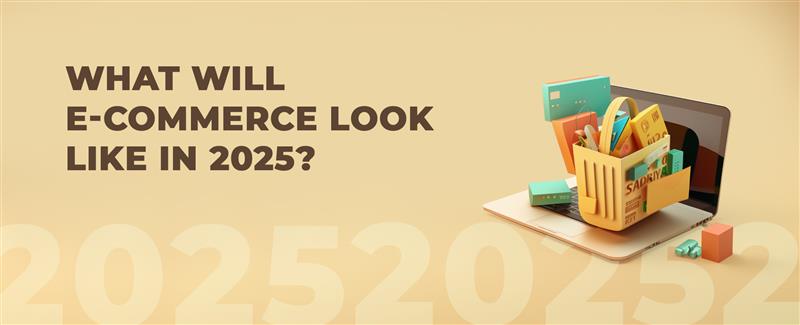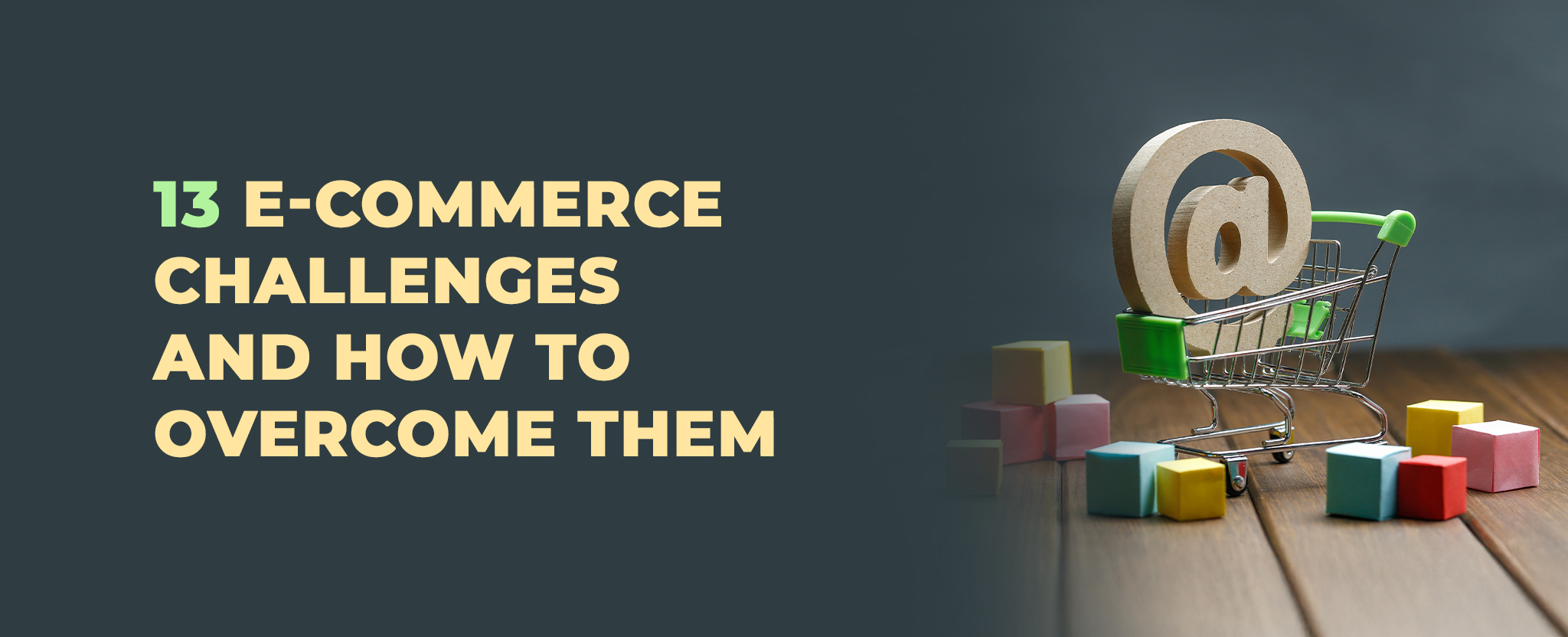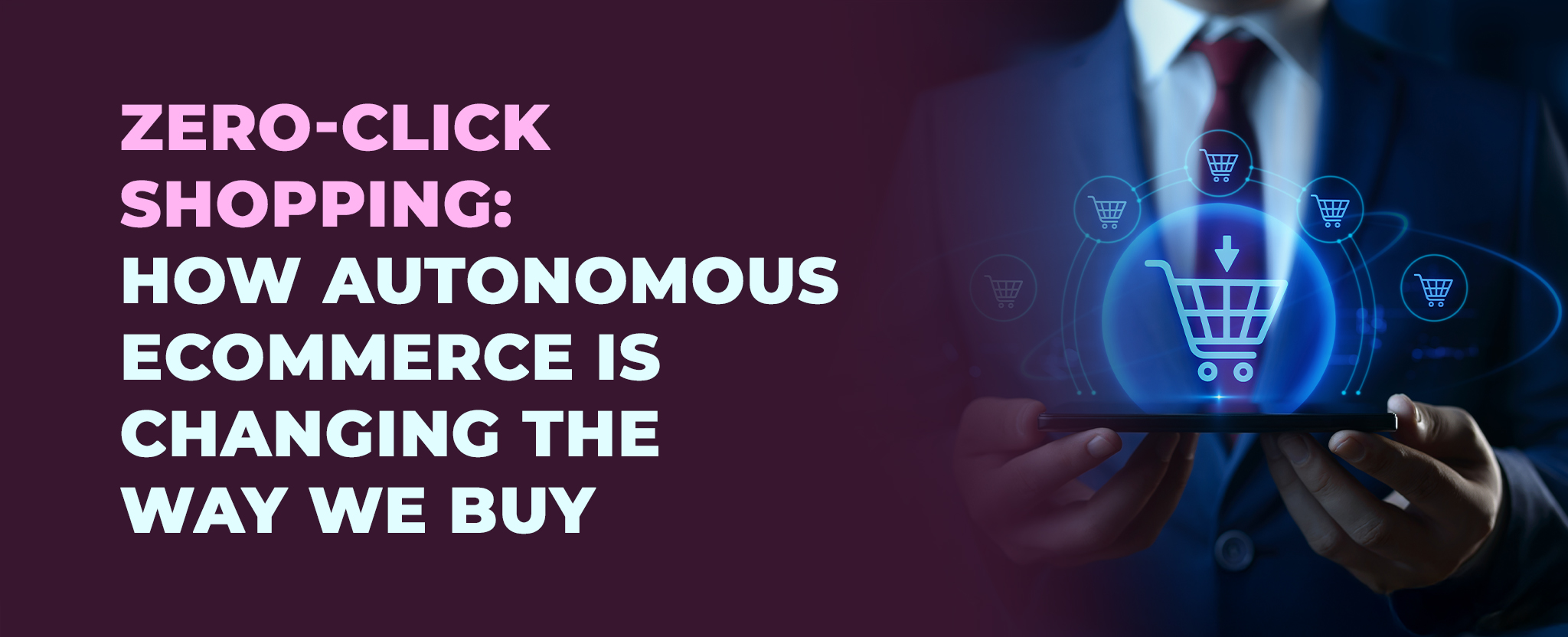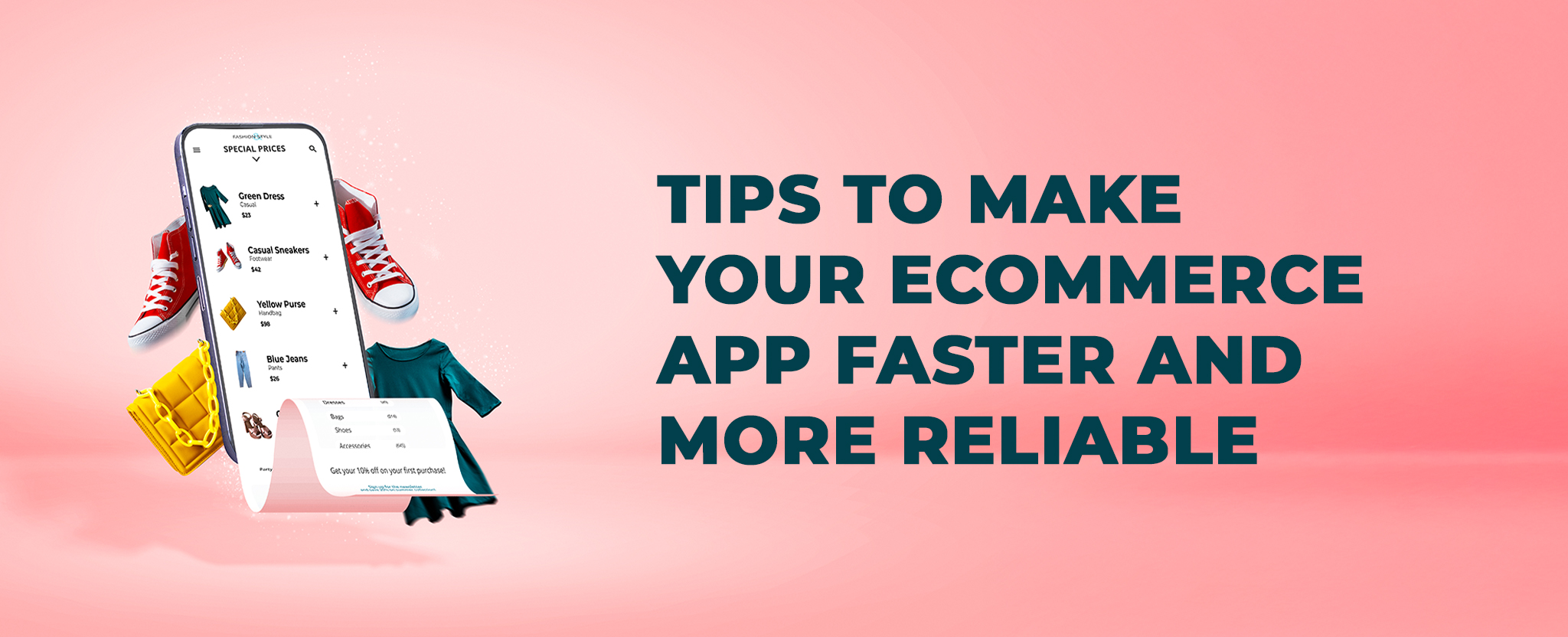What Will E-Commerce Look Like in 2025?
6 Dec 24 


It’s almost 2025, and the world of online shopping is evolving faster than ever before, transforming how businesses and consumers interact in the digital marketplace.
A dynamic e-commerce ecosystem is being fundamentally shaped by groundbreaking advanced technologies and rapidly shifting consumer expectations. At the forefront of this remarkable transformation is artificial intelligence (AI), which has emerged as the driving force behind innovation in digital retail.
What a surprise.
Well, AI isn’t just a futuristic concept anymore; it’s become the essential backbone of personalization, operational efficiency, and breakthrough innovation in digital commerce. Its impact reaches every corner of the online shopping experience, from customer service to inventory management.
In this blog, we’ll explore the key trend predictions and AI strategies affecting the global commerce market in the upcoming year, examining how these developments are reshaping the e Commerce scenario.
2025 E-Commerce Forecast Based on 2024 Statistics
Global eCommerce sales are projected to reach an impressive $6.3 trillion in 2024 (+8.76% from 2023) and $7.4 trillion in 2025, showing a remarkably strong upward trend that reflects the sector’s robust growth.
Online retail will account for a substantial 20.1% of total retail sales in 2024, rising significantly to 24% by 2025, reflecting an accelerating global shift toward digital shopping channels and changing consumer behaviors.
The number of online shoppers worldwide is expected to grow substantially from 2.71 billion in 2024 to 2.77 billion by 2025, covering an impressive 34% of the global population and highlighting the widespread adoption of digital commerce.
Mobile commerce will represent 44% of U.S. eCommerce sales by 2025, indicating a clear and growing consumer preference for mobile shopping experiences and the importance of mobile-first strategies.
China will continue to dominate the global eCommerce landscape in 2025 with over 52% of sales, followed by the U.S. at 20.1%, demonstrating the significant influence of Asian markets.
About 85% of global consumers now actively shop online, with 53% of Americans regularly engaging in weekly social media shopping, showcasing the integration of commerce into social platforms.
Global eCommerce is expected to maintain robust growth at a 7.8% CAGR from 2024 to 2027, primarily driven by increasing digital shopping adoption across diverse markets and demographics.
U.S. eCommerce sales are projected to reach a substantial $1.26 trillion in 2024, growing impressively to $1.72 trillion by 2027, highlighting the market’s continued expansion and potential.
40% of online shoppers actively avoid purchases due to growing data security concerns, pushing brands to significantly enhance their privacy measures and security protocols.
By 2029, nearly 49.1% of the global population (3.9 billion people) will regularly shop online, fueled by expanding internet access and continued mobile technology growth worldwide.
Key Trends Defining E-commerce in 2025
Online shopping experiences in 2025 are being dramatically shaped by groundbreaking technological innovations and an ever-growing consumer demand for better, more sophisticated, and highly personalized experiences. Let’s dive deep into the transformative trends that will lead the charge in reshaping the digital retail landscape.
Personalization Goes Next-Level with AI
Think about that magical moment when you’re browsing online and a store seems to read your mind, presenting you with exactly what you’ve been searching for. That perfect summer dress that matches your style, size, and color preferences appears right before your eyes, almost as if the store personally knows your fashion taste.
By 2025, the use of AI in e-commerce will revolutionize personalization, taking it far beyond basic product recommendations. Through increasingly sophisticated machine learning algorithms and neural networks, businesses will harness the power to analyze intricate patterns in browsing histories, past purchase behaviors, social media interactions, and comprehensive demographic profiles to deliver hyper-personalized shopping experiences that feel almost intuitive.
What does that look like in practice?
Imagine a shopping experience where every aspect is precisely tailored to your preferences. From AI-powered product recommendations that understand seasonal variations in your shopping patterns to marketing messages that adapt their tone and content based on your previous interactions, the entire customer journey becomes uniquely yours. The website layout itself will dynamically adjust, highlighting categories you frequently browse and simplifying navigation paths based on your shopping habits.
These AI-driven e-commerce tools will transform every customer interaction into a meaningful engagement opportunity, creating an emotional connection that goes beyond traditional transactional relationships. By understanding and anticipating customer needs with unprecedented accuracy, brands can foster deeper loyalty and create lasting relationships with their audience.
But the personalization revolution extends far beyond these basic elements. Advanced AI systems will enable sophisticated shopping interfaces that can predict future purchases based on past behavior patterns, automatically adjust pricing based on customer loyalty levels, and create custom bundle offers that align perfectly with individual shopping preferences. The system will even consider factors like local weather patterns, upcoming events in your calendar, and seasonal trends to make increasingly relevant suggestions.
Personalized promotional strategies will become more nuanced, with AI systems calculating the optimal timing, channel, and content for each customer communication. Special offers will be tailored not just to past purchases but to browsing patterns, wish list items, and even abandoned cart history, creating a comprehensive understanding of customer intent and preferences. This level of personalization extends to live shopping, where brands engage customers in real time through high-quality streams powered by an RTMP server.
This level of personalization will be particularly crucial in the evolving global digital commerce market, where standing out among countless online retailers becomes increasingly challenging. By making every customer interaction feel personally relevant and valuable, businesses can maintain competitive advantage and build sustainable growth.
The system will also learn from customer feedback and behavior in real-time, continuously refining its understanding of individual preferences and adapting its recommendations accordingly. This creates a dynamic, ever-improving shopping experience that becomes more accurate and relevant with each interaction.
Immersive Shopping with VR and AR
Ever wish you could “try before you buy” when shopping online? Virtual reality (VR) and augmented reality (AR) are here to make that possible.
By 2025, these technologies will blur the lines between e-commerce growth and offline shopping, giving customers a hands-on experience from the comfort of their homes.
Imagine trying on clothes virtually, seeing how a new couch fits in your living room, or exploring a store as if you were walking through it in real life.
Industries like fashion, beauty, and home décor are already embracing this emerging e-commerce trend for 2025, reducing return rates and boosting customer confidence.
As VR and AR tools become more accessible, expect immersive shopping to be a standard feature on e-commerce platforms, shaping the future of digital commerce.
AI isn’t just about customer-facing innovations. It’s revolutionizing the operational backbone of e-commerce, transforming businesses into smarter, more agile, and highly efficient entities that can adapt and respond to market demands with unprecedented precision and speed.
Smarter Customer Service with AI Chatbots
Chatbots have come a long way, evolving from simple rule-based systems to sophisticated conversational agents powered by advanced machine learning algorithms.
By 2025, these digital assistants will handle even the most complex customer queries with remarkable ease and human-like understanding. Through sophisticated natural language processing (NLP) capabilities, AI in e-commerce can comprehend not just the literal meaning of customer communications but also decode the subtle nuances, intent, and emotional undertones behind each interaction. This deep level of understanding enables more meaningful and context-aware responses.
Imagine reaching out for assistance at midnight and receiving an instant, comprehensive response—not from a fatigued human agent but from an AI-powered assistant that maintains consistent performance 24/7. These AI assistants can simultaneously handle thousands of customer interactions, providing personalized support across multiple languages and time zones.
This enhanced customer service capability not only significantly boosts customer satisfaction metrics but also strategically frees up human agents to focus on more complex, high-value tasks that require emotional intelligence and creative problem-solving skills.
You may also read Know These Latest AI Chatbots Trends & Its Applications
AI Advertising Transforming the Way Brands Connect
If AI can drive cars and write poetry, why shouldn’t it revolutionize the entire spectrum of advertising services for e-commerce stores?
That’s precisely the driving force behind the development of AI Advertising, a game-changing innovation in digital marketing.
AI Ads have evolved into sophisticated systems that can autonomously optimize campaigns, precisely target ideal audience segments, and dynamically design the most engaging visuals from extensive product catalogs, all while continuously learning and improving from performance data.
The results speak for themselves: increased sales efficiency, optimized budget allocation, and minimal manual intervention required. E-commerce stores leveraging Facebook Ads and Google Ads are now amplifying their sales through innovative AI-driven strategies—achieving remarkable results at a fraction of the cost compared to traditional advertising methods.
Through sophisticated analysis of user behavior patterns and preferences, AI ensures your advertising reaches the most receptive and relevant audience segments at optimal times.
AI Remarketing takes this further by intelligently reconnecting brands with previous customers, delivering perfectly timed messages through the most effective channels.
When we mention “the right tools,” we’re specifically referring to advanced AI Creatives—a revolutionary capability that automatically enhances and optimizes product catalogs for maximum visual impact and engagement.
AI-Powered Inventory Management
Traditional inventory systems often grapple with the complexities of accurate demand forecasting and efficient stock level management. In contrast, cutting-edge AI-driven inventory management systems leverage sophisticated machine learning algorithms to analyze vast amounts of sales data, seasonal trends, and market conditions in real-time.
The future promises fewer stockouts, significantly reduced waste, and enhanced customer experiences through predictive inventory optimization. By 2025, AI-powered inventory systems will become the indisputable gold standard for sustainable e-commerce growth and operational excellence.
Predictive Analytics: Anticipating Customer Needs
One of the most transformative applications of AI in e-commerce is predictive analytics, which provides businesses with unprecedented insights into consumer behavior and market trends.
Through advanced data analysis and machine learning, predictive analytics in e-commerce can accurately forecast shopping trends, identify emerging patterns in consumer behavior, and anticipate individual preferences with remarkable precision, enabling businesses to stay ahead of market demands and customer expectations.
What does this mean for businesses? The implications are far-reaching and transformative. Companies can now develop laser-focused marketing strategies based on deep consumer insights, implement sophisticated dynamic pricing models that adapt in real-time to market conditions, and create personalized online shopping experiences that resonate perfectly with individual customer preferences and behaviors.
Business trends shaping e-commerce will make predictive analytics not just a competitive advantage, but an essential tool for survival and growth in an increasingly sophisticated digital marketplace. Companies that harness these capabilities will be able to anticipate market shifts, optimize their operations, and deliver exceptional customer experiences at scale.
Putting It All Together
E-commerce trends in 2025 will represent a sophisticated convergence of cutting-edge innovation, hyper-personalization, and seamless integration between advanced technology and evolving human needs. Forward-thinking businesses that fully embrace these transformative trends—especially the power of AI will emerge as the pioneering forces shaping the future of e-commerce.
So, whether it’s crafting a highly personalized shopping experience, implementing sophisticated dynamic pricing strategies, or leveraging VR technology to create immersive and engaging shopping journeys, the message remains unmistakably clear:
The 2025 e-commerce market will belong exclusively to those organizations that demonstrate the agility, vision, and courage to adapt and innovate continuously. Ready to explore?
- Agentic AI1
- Android Development3
- Artificial Intelligence33
- Classified App3
- Custom App Development5
- Digital Transformation12
- Doctor Appointment Booking App14
- Dropshipping1
- Ecommerce Apps40
- Education Apps2
- Fintech-Apps37
- Fitness App4
- Flutter4
- Flutter Apps20
- Food Delivery App5
- Grocery App Development1
- Grocery Apps3
- Health Care10
- IoT2
- Loyalty Programs9
- Matrimony Apps1
- Microsoft1
- Mobile App Maintenance2
- Mobile Apps128
- Product Engineering6
- Progressive Web Apps1
- React Native Apps2
- Saas Application2
- Shopify9
- Software Development3
- Taxi Booking Apps7
- Truck Booking App5
- UI UX Design8
- Uncategorized6
- Web App Development1



















Comments